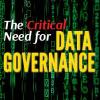Strategic advice to leverage new technologies
Technology is at the heart of nearly every enterprise, enabling new business models and strategies, and serving as the catalyst to industry convergence. Leveraging the right technology can improve business outcomes, providing intelligence and insights that help you make more informed and accurate decisions. From finding patterns in data through data science, to curating relevant insights with data analytics, to the predictive abilities and innumerable applications of AI, to solving challenging business problems with ML, NLP, and knowledge graphs, technology has brought decision-making to a more intelligent level. Keep pace with the technology trends, opportunities, applications, and real-world use cases that will move your organization closer to its transformation and business goals.
Recently Published
Toward Good Open Data Governance
This article describes what good governance means for public sector institutions that are embracing open data initiatives. While these organizations make data accessible to increase government transparency and promote economic empowerment, they face additional responsibilities in terms of data quality, privacy compliance, security, and more.
Michael Atkin depicts the conflicting demands on the CDO, who must cover “operational data management” as well as “data management for analytical insight.” He shows how caring for the quality of the data, understanding its provenance and pedigree, minimizing the transformations, and adding semantic understanding of the data are part of the new responsibilities of the CDO 2.0.
Steven Woodward explores in depth the issues of data residency, using the term “geo-jurisdictions” to describe the intersection of geographical and legal boundaries that place constraints on the handling of data. Woodward begins by alerting organizations that falsely believe that data residency is not a concern for them. From this warning, the author moves on to concrete recommendations about policies that should be put in place for various service and deployment models as well as the need for a thorough geo-jurisdiction analysis.
While issues around data and information governance are starting to get the attention they deserve, business and technology leaders still need help finding their way through all the conflicting demands. We invited several authors to present their perspectives and recommendations on this complex web of issues.
In this Executive Update, we briefly revisit some earlier lifecycle development models and examine the historic move away from waterfall to DevOps via iterative/ incremental and Agile development approaches. In doing so, we push the Agile envelope a little further and consider some trends that affect business analysis and requirements specification and examine the implications of the Agile development framework for business analysts (BAs) when working within a DevOps regime.
Fog computing can create a digital twin of difficult-to-replicate process. Let me explain, through a hypothetical example of a craft brewery. Unlike industrial production, food and beverage manufacturers work with natural ingredients, where the quality of raw materials can vary, making it more difficult to create a uniform product without waste. Producing a consistent quality product is critical to building customer loyalty. When it comes to products of nature, in particular, manufacturers face unique challenges.
Over the last 12-16 months, we have seen more than a dozen banks and financial institutions worldwide introduce (or announce) virtual banking assistants and bots. Such apps are now available to millions of personal banking customers, and banks are also starting to introduce AI-powered digital assistants for managing corporate customers’ accounts. This Advisor explores some examples of intelligent virtual assistants and bankbots companies have introduced over the past year or so.
Data centers that support today’s cloud systems must implement extensible networks based on technology that allows them to scale in an Agile, cost-effective fashion. Market trends include customer microsegmentation analytics supported by communications service providers that leverage microsegmentation analytics to improve customer retention, revenue generation, and customer experience.


















